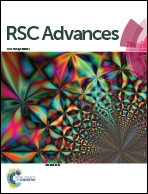Effect of strain on the electronic and magnetic properties of an Fe-doped WSe2 monolayer
Abstract
We investigate the electronic and magnetic properties of an Fe-doped single-layer WSe2 sheet with strain from −10% to 10% using first-principles methods based on density functional theory. In our calculation, an Fe-doped WSe2 monolayer is a magnetic semiconductor without strain. With the tensile strain increasing, its magnetic moment increases slightly, and the system shows a half-metal feature from 4% to 9% and transforms to a metal at 10% strain. The largest half-metallic gap is 0.183 eV at 4% tensile strain. However, with compressive strain increasing, its magnetic moment decreases slightly and disappears from −5% to −10%, and the system transforms from half-metallic to metallic. Fe-doped WSe2 can endure strain from −4% to 10%. Our studies predict Fe-doped WSe2 monolayers under strain to be candidates for dilute magnetic semiconductors. Moreover, the formation energy calculations also indicate that it is energy favorable and relatively easier to incorporate Fe atom into the WSe2 monolayer under Se-rich experimental conditions.


 Please wait while we load your content...
Please wait while we load your content...